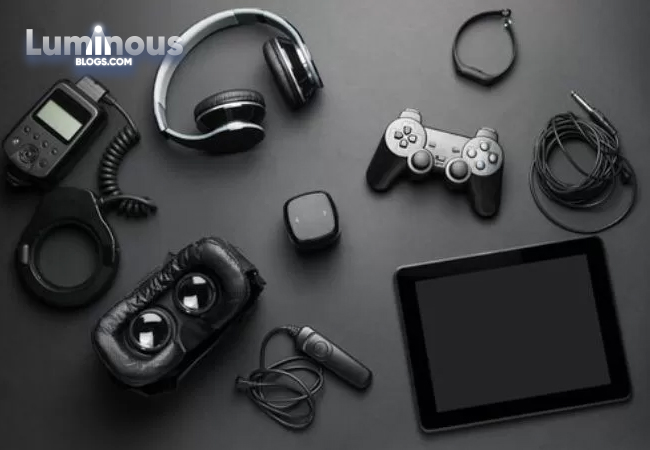
The Evolution of Mobile Phones: From Brick to Smartphone
In the span of a few decades, mobile phones have evolved from bulky bricks with limited functionality to sleek, powerful smartphones that have become an integral part of our daily lives. This transformation in mobile technology represents a remarkable journey of innovation, design, and convenience. In this blog, we'll take you through the incredible evolution of mobile phones, from the early days of "brick phones" to the sophisticated smartphones we know today.
The Birth of Mobile Communication
The story of mobile phones begins in the late 1940s, with the invention of the first mobile telephone systems. However, it was in the 1970s and 1980s that mobile communication technology started taking shape.
First-Generation Mobile Phones (1G)
The first-generation mobile phones, known as 1G, made their debut in the early 1980s. These phones were large, heavy, and had limited battery life. They were primarily used for voice calls and had a single purpose: to provide mobile communication.
The Iconic "Brick" Phones
The 1G era is often associated with the iconic "brick" phones, which gained popularity in the 1980s. The Motorola DynaTAC 8000X, weighing nearly 2 pounds, became a symbol of luxury and status. It had a single-line LED display and a massive price tag.
Second-Generation Mobile Phones (2G)
The 1990s marked the advent of 2G technology, which introduced digital cellular networks. These phones were more compact and offered features like text messaging and limited data services. Nokia's iconic "candy bar" phones, such as the Nokia 3210, became widely popular during this period.
The Rise of Flip Phones and SMS
Flip phones, characterized by their clamshell design, gained prominence during the 2G era. These phones had external displays, physical keypads, and the ability to send and receive SMS messages. Text messaging became a key form of communication.
Third-Generation Mobile Phones (3G)
The early 2000s brought the transition to 3G technology, enabling faster data transmission. This era saw the emergence of phones with color screens, built-in cameras, and mobile internet capabilities. Nokia's N series and Sony Ericsson's Walkman phones were notable during this period.
The Advent of the Camera Phone
In 2000, the Sharp J-SH04 became the world's first camera phone, featuring a 110,000-pixel CMOS image sensor. This innovation marked the beginning of mobile photography, a trend that has since become a staple of modern smartphones.
The Birth of the Smartphone Era
The true revolution in mobile technology began with the introduction of smartphones. These devices combined the functionalities of phones, personal organizers, cameras, and entertainment devices, all in one compact package.
The Rise of BlackBerry
In the mid-2000s, BlackBerry emerged as a pioneering brand in the smartphone market. BlackBerry devices were known for their physical QWERTY keyboards and secure email services, making them popular among professionals.
Fourth-Generation Mobile Phones (4G)
The rollout of 4G networks in the late 2000s and early 2010s brought improved data speeds and allowed for seamless internet browsing and video streaming on mobile devices. Smartphones like the iPhone 4 and Samsung Galaxy S series gained popularity.
The Smartphone Wars: Android vs. iOS
The battle between Android and iOS operating systems shaped the smartphone landscape. Android's open-source platform, used by numerous manufacturers, brought a wide range of device options. Apple's iOS, on the other hand, offered a cohesive ecosystem of devices and services.
Advancements in Mobile Photography
Smartphone cameras continued to improve, with multi-lens setups, image stabilization, and AI-driven features. Mobile photography has become a significant part of our daily lives, with social media platforms emphasizing visual content.
Fifth-Generation Mobile Phones (5G)
The introduction of 5G technology in the late 2010s brought even faster data speeds and low latency. It promises to revolutionize various sectors, including IoT, autonomous vehicles, and augmented reality.
The Era of Foldable Phones
Foldable phones, with flexible screens that can expand into tablet-sized displays, have emerged as a new frontier in mobile technology. Brands like Samsung and Huawei have introduced foldable models, opening up possibilities for multitasking and creative use.
Integration of AI and Virtual Assistants
Artificial intelligence and virtual assistants like Siri, Google Assistant, and Alexa have become an integral part of smartphones. They offer voice recognition, predictive text, and personalized recommendations.
The App Ecosystem
The availability of mobile apps has exploded, offering solutions for everything from communication and productivity to entertainment and fitness. App stores have become a central hub for downloading software tailored to individual needs.
Environmental Considerations
As mobile technology has advanced, concerns about electronic waste and environmental sustainability have also grown. Initiatives for recycling and responsible disposal of electronic devices are on the rise.
The Future of Mobile Phones
The journey of mobile phones from the early "brick" phones to today's sophisticated smartphones is a testament to human innovation. The future holds exciting possibilities, with developments like augmented reality, flexible displays, and advancements in battery technology. Mobile phones are not just devices; they are portals to a world of information, communication, and creativity, and their evolution continues to shape our daily lives.
As we look ahead, one thing is certain: the story of mobile phones is far from over. With each technological leap, these devices become more integrated into our lives, offering new ways to connect, explore, and capture the world around us. The evolution of mobile phones is a testament to human ingenuity, and it will continue to reshape our future in ways we can only begin to imagine.


